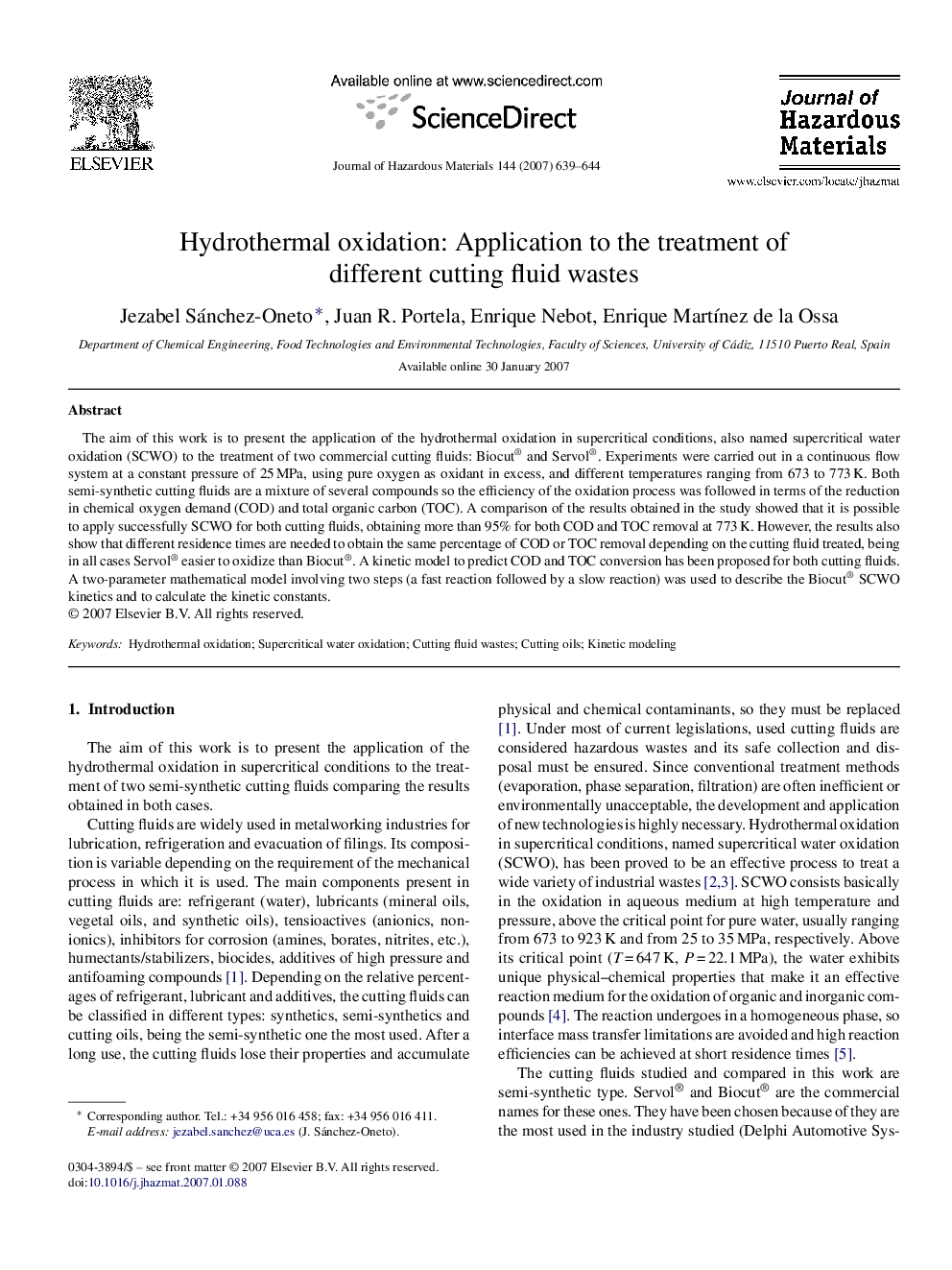| Article ID | Journal | Published Year | Pages | File Type |
|---|---|---|---|---|
| 584347 | Journal of Hazardous Materials | 2007 | 6 Pages |
Abstract
The aim of this work is to present the application of the hydrothermal oxidation in supercritical conditions, also named supercritical water oxidation (SCWO) to the treatment of two commercial cutting fluids: Biocut® and Servol®. Experiments were carried out in a continuous flow system at a constant pressure of 25Â MPa, using pure oxygen as oxidant in excess, and different temperatures ranging from 673 to 773Â K. Both semi-synthetic cutting fluids are a mixture of several compounds so the efficiency of the oxidation process was followed in terms of the reduction in chemical oxygen demand (COD) and total organic carbon (TOC). A comparison of the results obtained in the study showed that it is possible to apply successfully SCWO for both cutting fluids, obtaining more than 95% for both COD and TOC removal at 773Â K. However, the results also show that different residence times are needed to obtain the same percentage of COD or TOC removal depending on the cutting fluid treated, being in all cases Servol® easier to oxidize than Biocut®. A kinetic model to predict COD and TOC conversion has been proposed for both cutting fluids. A two-parameter mathematical model involving two steps (a fast reaction followed by a slow reaction) was used to describe the Biocut® SCWO kinetics and to calculate the kinetic constants.
Related Topics
Physical Sciences and Engineering
Chemical Engineering
Chemical Health and Safety
Authors
Jezabel Sánchez-Oneto, Juan R. Portela, Enrique Nebot, Enrique MartÃnez de la Ossa,
